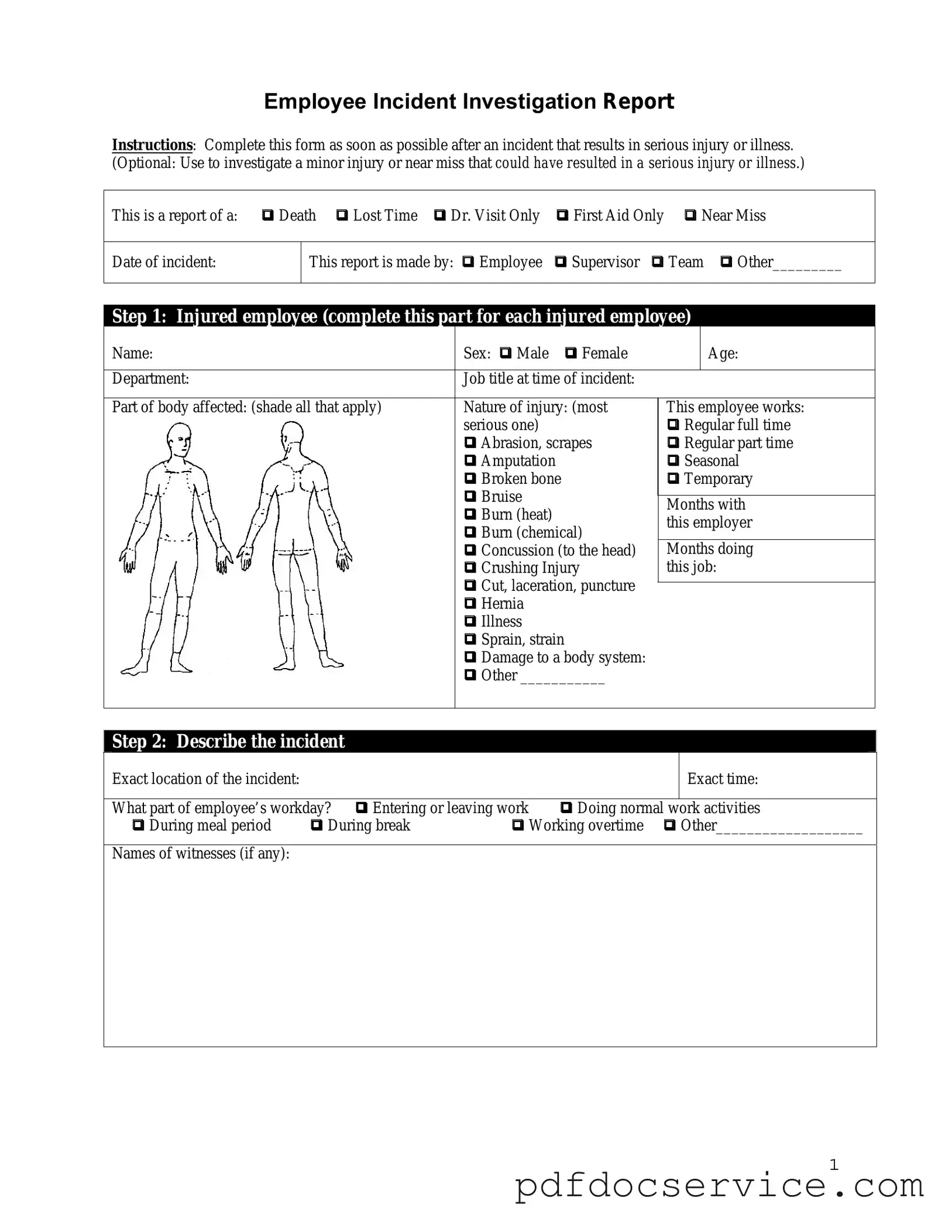Fill Your Employee Accident Report Form
The Employee Accident Report form is a crucial document designed to capture the details of workplace incidents involving employees. This form serves not only to document the event but also to ensure that appropriate measures are taken to prevent future occurrences. Understanding its importance can help foster a safer work environment for everyone.
Open Employee Accident Report Editor
